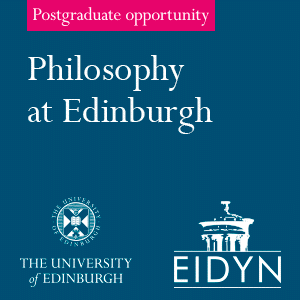Representation at the APA
“41 of 45 the APA’s officers, or 91.1%, are from research universities. While I understand that research plays a central role in the discipline, this strikes me as potentially a missed opportunity in several respects.”
Those are the words of Marcus Arvan, associate professor of philosophy at the University of Tampa, in a post at The Philosophers’ Cocoon, written in the wake of the American Philosophical Association’s recent elections.
Professor Arvan isn’t objecting to which candidates won. As he says, he was “pleasantly surprised that a number of people I voted for were elected.” But he thinks it would be good for the APA if it paid more attention to the disparity in the types of universities and colleges its officers work at. Why?
He writes:
First, as someone who works at a liberal arts university, my sense is that philosophers at institutions like mine face a distinct set of challenges—many having to do with pressures in higher education to marginalize the humanities, major and program closures, increased administrative and assessment burdens on top of high teaching loads, adjunct dependence, and so on… My sense is that if we want to preserve the discipline of philosophy and have it flourish in the decades to come, it may be very important for professional organizations like the APA to be sensitive to these unique challenges, in ways that (I think) only representatives from such institutions may be well-placed to understand. By a similar token, I think it would probably make a great deal of sense to not only have ample representation by faculty from liberal arts universities, but also from community colleges—as faculty in those environments almost certainly have professional challenges of their own that professional organizations might help with.
Second, I think that expanding representation in the boards of professional organizations may help faculty from non-research universities feel more included and valued in the profession—and, by extension, graduate students and job-marketeers seeking such jobs. For my part, I have heard on multiple occasions of how faculty from “teaching schools” can feel left out or marginalized in the profession–ranging from how they feel treated at conferences (viz. “People just ignore me when they see my nametag”) to how the vast majority of prestigious prizes in the profession are for research rather than for teaching, service, to grad students being told by faculty in their highly-ranked programs that jobs at teaching schools are undesirable, and so on. I think, in other words, that more representation from faculty at different kinds of programs might help our discipline become less hierarchical, demonstrating more to its diverse membership that what we all do is valuable (and valued).
He also suggests it would be good to “seek out and include philosophy PhDs who have left academia for positions on the board—philosophers who are still interested in the profession, but who (for whatever reason) have pursued ‘alt-ac’ careers.”
Professor Arvan refrains from possible explanations for the disparity he notices. Part of it may be owed to institutional incentives: certain types of schools may steeply prioritize service to the school over service to the profession. Part of it may be owed to the way jobs are structured: higher teaching loads may leave professors with less flexibility in their schedules for fitting in additional service work. There may be other factors at work here. It would be especially useful to hear from professors at institutions that are not “R1“-type places as to what they think is the explanation for the representational disparity, and what they think should be done, if anything, to change it.




Surely the main reason is that philosophers at major research universities are the ones with the greatest name recognition, and therefore the ones likely to attract the most votes. Broadening participation to faculty in other sorts of positions, which seems well worth doing, might require moving to some other process for at least some officers (e.g., selection by lot).
I agree with this 100%, and I think there should be proportional adjunct representation as well. With broader representation we might see less focus on research prizes and more on teaching and adjunct advocacy, for example. But keep in mind that there are no real barriers to liberal arts college professors, etc., running for election. I can’t remember seeing a lot of non-R1 *candidates* over the past few years. If more non-R1 candidates would run, we might be surprised at their success. In the meantime, the APA is doing quite a bit to reach out to the existing plurality: the Blog of the APA interviews, The APA-AAPT Teaching Hub, and the career highlight posts on Twitter very often (really most often) feature non-R1 faculty. Finally, non-R1 faculty looking for support, classroom innovation, and community should also join the AAPT, which strives to serve all teaching-oriented philosophers.
Just for context, what % of tenure-track/tenured philosophers work at research universities? (If the tt/t part is controversial, any other relevant data appreciated.) Hard to know if 90% is high or low.
Hi Jon: This document appears to answer your question – http://carnegieclassifications.iu.edu/downloads/2000_edition_data_printable.pdf
It lists 522 PhD-granting research universities, 1,222 MA-granting research universities, 1,212 BA-only colleges and universities, and 1,669 Associates-degree colleges. (p. 6, Table 2)
That is 1,744 research universities compared to 2,881 non-research colleges and universities. Although research universities presumably tend to have larger departments (and hence, more faculty per discipline per school), as we see here the number of non-research institutions vastly outnumbers research universities. Consequently, it is almost certainly not the case that anywhere close to 90% of TT philosophy faculty work at research universities. As a ‘guess-timmate’, I’d say it’s probably something like 50/50.
Insofar as research institutions, on average, have much larger faculties than non-research institutions, it’s not the *number of institutions* that we should care about, but the *number of faculty*. In other words, 90% “looks like” some disproportionate result, but we need *actual data* to tell us whether that’s true. (While I doubt it’s true, you could certainly imagine that 90% could be underrepresented, as a % of the employed profession.)
Respectfully, I don’t think guessing at 50/50 is a great methodology here; if we don’t have the data we need to make substantive claims, we should probably be a bit more agnostic than this post suggests. And flag from the outset what our methodological shortcomings are, and that we’re guessing, rather than making data-driven claims.
Hi Jon: that’s a fair point – though I don’t see any plausible way to get from the number of institutions above to anything like a 9:1 ratio of TT faculty at research institutions to others.
According to the above numbers there are 1.6x more non-research institutions to research institutions. For there to be a 9:1 TT faculty ratio, research departments would then need to have 14.4 TT faculty for every *one* TT faculty member at non-research institutions. I don’t see how anything remotely close to that is plausible. My sense is that research departments on average are only maybe 4-6x as large (TT-wise) as departments at non-research schools. Which suggests to me that the ratio of TT faculty at research vs. non-research institutions is far less than 9:1.
Anyway, I think you are right to note that hard data is important. But I don’t think we need the exact data to be pretty confident that it’s not the case that 91.1% of TT faculty work at research institutions – and hence to get this conversation started.
Using AAUP data, such as in this report (https://www.chronicle.com/article/Full-Time-Instructional/148195), you get roughly the following: In general, among all fields at all four-year+ colleges and universities, you have roughly 5-6 TT profs at research universities for every 6-7 TT profs at non-research colleges. The reason for that ratio being so close is that research schools have larger faculties.
Don’t have data for philosophy in particular.
However, note that most faculty at R2s and R3s publish little, and surveys generally find that they spend only about 1/10th to 1/20th of their time on research. In contrast, some professors at certain elite liberal arts colleges such as Williams, Amherst, or William and Mary publish a great deal.
Thanks Jason, that’s super helpful. Assuming the numbers are similar in philosophy, that suggests there are substantially more TT faculty at non-research institutions than at research institutions, making the skew in representation all the more striking.
I’d be interested to see the data about publication rates at R2s and R3s. I’m at an R2, in a department without a graduate program, and it’s certainly not the case here that most faculty publish little. When I was coming up for tenure I was told that I’d need about seven articles to feel safe, and I can’t believe that the number is too much higher at R1s. Of course the expectations aren’t the same as at an R1, and can’t be with our higher teaching loads, but where I see the difference is in terms of where we’re expected to publish; there’s not the same level of institutional pressure to get your work in the very top-ranked journals. Of course, not all R2s are the same, and R3s are something else entirely.
I think the point about including instructors at the APA from institutions which are not focused solely on research (especially at the two-year level) is spot on. Not only because of the job market realities which may push many new PhDs into positions which place a heavier emphasis on teaching, but also because of the interdependent relationship between most two- and four-year colleges. Many students from two-year colleges end up going on to transfer to four-year institutions, and their experience with philosophy (or lack thereof) is likely to inform whether or not they even take philosophy courses further along in their education. Additionally, if we are looking to work together on how to promote the Liberal Arts and Humanities, who better to work with than instructors whose primary employment and tenure depends upon their pedagogical methodologies and interactions with students? These are what get butts in seats and there is so much we can learn from and share with one another. On a final note, I would imagine that faculty at four-year institutions might be in a better advising position if they were more familiar with the ins and outs of the hiring process at two-year colleges. They are very different and few, if any, graduate programs seem to be in a position to inform their graduates about these details since the professors themselves most likely have not had much experience with the two-year college system from a employment perspective.
As one of the folks who regularly hears “Oh X College? I’ve never heard of that,” I am sympathetic to Arvan’s argument. But I also have to stress some of the logistical challenges for people at public teaching schools or community colleges. Our teaching loads are high and our students are demanding. I often spend 20-30 hours a week meeting with students outside of class; they need help with things like reading comprehension and basic college-readiness skills. To ignore their needs would be to neglect their learning, and as a pre-tenure person whose promotion depends upon teaching evaluations, I can’t afford to turn students away. (I also think it would be morally wrong to do so.) Many faculty at institutions like mine are expected to devote an immense amount of time to service at the College, and student meetings and advising do not count. Service to the profession is not important to our administrators, who largely don’t value philosophy, anyway. So then we spend time trying to be innovative, or work across disciplines, or make philosophy visible; these things may be good things to do, anyway, but they take a lot of time and the pressure to perform is immense. Add to this that we are still expected to publish and still want to do the research we love, and I honestly don’t know what time or emotional energy would be left to serve the APA. We certainly wouldn’t get a course-release to do so. And many of us continue to go on the job market every year since the position of philosophy at our schools is not secure.
I should say that I still love my job, in large part because my students are amazing, and I consider myself very lucky to be able to teach philosophy for a living. And again, I agree with what Marcus says about the distinct challenges facing folks at schools like mine and with the need for a more inclusive community. Just, with respect, I’m not sure that his suggestion is the right (or realistic?) solution.
Philosophers at liberal arts colleges (even selective liberal arts colleges where research is important) have a very different workplace experience from philosophers at research universities. For the APA to be able to support the professional development of philosophers in a variety of different situations they need to have some kind of understanding of those situations. Yet many philosophers from research universities don’t seem to understand what the experience of philosophers at liberal arts colleges is like. (Even worse, they don’t seem to value this kind of experience. ) When they view things through a pure-research-oriented lens, or through a support-for-graduate-students lens, they are missing many aspects of the day-to-day worklife of a huge number of philosophers in the profession. Perhaps the research university folks could find some way to broaden their understandings of what life as a philosopher is like. But in the absence of that, having more philosophers from non-research universities could greatly strengthen the APA’s ability to carry out its mission.
An adequately diverse representation of the profession is something the APA cares about and I think they would be open to responding to the numbers Marcus has presented. I do think there are probably inadvertent distortions that get introduced when so many decision makers are from PhD granting programs—placing a high emphasis on sopprting graduate students so that they can get jobs while placing lass emphasis on the needs of TT faculty so that they can keep their jobs is one example.
If the ideal goal is proportional representation among APA officers, is APA members or professional philosophers generally that should be represented?
omitted ‘it’: …is it APA members…
Is PhD granting institution any institution that grants PhDs? That would seem a terrible definition of research university for philosophy purposes. Lots of state colleges grant PhDs in a few subjects like education, and more private schools are going this way with “professional” degrees. I teach at one of those (state) colleges. I also have a 4/4 teaching load and almost no one I know would consider my job a research job.